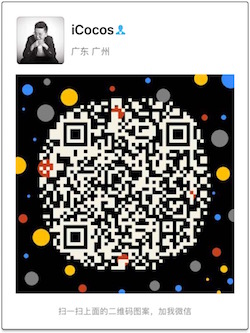一,决定当前UIViewController显示方向的因素
1,全局控制
工程设置中设置支持的Device Orientation,如果这里没有设置其中的一个方向,即使后面的UIViewController中配置了改方向,也是不会起作用的。实际上就是设置工程plist文件的Supported interface orientations属性。
2,配置AppDelegate
配置AppDelegate的如下方法返回需要用到的全部方向集合,如果要支持多个方向,一般都返回UIInterfaceOrientationMaskAll
- (UIInterfaceOrientationMask)application:(UIApplication *)application supportedInterfaceOrientationsForWindow:(nullable UIWindow *)window{
return UIInterfaceOrientationMaskAll;
}
似乎该方法默认值为Info.plist中配置的Supported interface orientations项的值。
3,自定义UIViewController,并实现如下orientation相关的三个方法(iOS6以后):
折叠复制内容到剪贴板
//是否支持多方向旋转屏,会考察当前设备方向和支持的方向。一些文档上说shouldAutorotate如果返回NO则不会执行下面两个方法纯属扯淡。
-(BOOL)shouldAutorotate
{
return YES;
}
//第二个方法返回支持的旋转方向
-(UIInterfaceOrientationMask)supportedInterfaceOrientations
{
return [self.viewControllers.lastObject supportedInterfaceOrientations];
}
返回最优先显示的屏幕方向,比如同时支持Portrait和Landscape方向,但想优先显示Landscape方向,那软件启动的时候就会先显示Landscape,在手机切换旋转方向的时候仍然可以在Portrait和Landscape之间切换;
-(UIInterfaceOrientation)preferredInterfaceOrientationForPresentation
{
return [self.viewControllers.lastObject preferredInterfaceOrientationForPresentation];
}
以上三个规则在每一个UIViewController中都会得到一个方向的交集集合,就是最终显示的方向。如果交集为空,会抛出UIApplicationInvalidInterfaceOrientationException崩溃异常。
二,典型的控制方案
另外一个非常重要的点就是并不是每一个UIViewController都会主动执行以上三个方法,根据特酷吧的实验,发现:
- 1,当UIViewController是rootViewController(Device Orientation方向变化时会主动执行)
- 2,当UIViewController是UINavigationController(Device Orientation方向变化时会主动执行)
- 3,当UIViewController以modal模态形式弹出时会主动执行。 一个典型的方案是,我们就可以在UINavigationController中这样写:
折叠复制内容到剪贴板
-(BOOL)shouldAutorotate
{
return YES;
}
-(UIInterfaceOrientationMask)supportedInterfaceOrientations
{
return [self.viewControllers.lastObject supportedInterfaceOrientations];//主动调用UIViewController对应的方法,达到在UIViewController中自定义的效果
}
-(UIInterfaceOrientation)preferredInterfaceOrientationForPresentation
{
return [self.viewControllers.lastObject preferredInterfaceOrientationForPresentation];
}
接下来就只需要自定义各自的VC
-(UIInterfaceOrientationMask)supportedInterfaceOrientations{
return UIInterfaceOrientationMaskPortrait;//根据需要
}
- (BOOL)shouldAutorotate
{
return NO;//根据需要
}
-(UIInterfaceOrientation)preferredInterfaceOrientationForPresentation
{
return UIInterfaceOrientationPortrait;//根据需要
}
事实上在作为一个UINavigationController的堆栈系统,普通的UIViewController的orientation方法只是一个配置项,最终决定屏幕方向的还是UINavigationController控制器,也就是UINavigationController拿UIViewController得配置决定当前控制器的方向。
三,强制屏幕旋转
如果UIInterfaceOrientation和UIDeviceOrientation方向不一样,想强制将UIInterfaceOrientation旋转成UIDeviceOrientation的方向,可以通过l类方法attemptRotationToDeviceOrientation,但是如果想将interface强制旋转成任一指定方向,就不太好实现了。目前大致有以下几种方式:
1,使用私有方法
折叠复制内容到剪贴板
[[UIDevice currentDevice] setOrientation:UIInterfaceOrientationPortrait];
具体可以这样:
if ([[UIDevice currentDevice] respondsToSelector:@selector(setOrientation:)]) {
SEL selector = NSSelectorFromString(@"setOrientation:");
NSInvocation *invocation = [NSInvocation invocationWithMethodSignature:[UIDevice instanceMethodSignatureForSelector:selector]];
[invocation setSelector:selector];
[invocation setTarget:[UIDevice currentDevice]];
int val = UIInterfaceOrientationLandscapeRight;
[invocation setArgument:&val atIndex:2];
[invocation invoke];
}
2,主动触发orientation相关方法
只要提前设置好想要支持的orientation,然后主动触发orientation机制,使新设置的orientation起作用便能实现将 interface orientation旋转至任意方向的目的。像这样:
UIViewController *vc = [[UIViewController alloc]init];
[self presentModalViewController:vc animated:NO];
[self dismissModalViewControllerAnimated:NO];
3、旋转view的transform
前两种都是试图触发orientation相关方法,第三种可能会造成一些不可预知的风险不推荐。
微信号:
clpaial10201119(Q Q:2211523682)
微博WB:
http://weibo.com/u/3288975567?is_hot=1
gitHub:
博客

